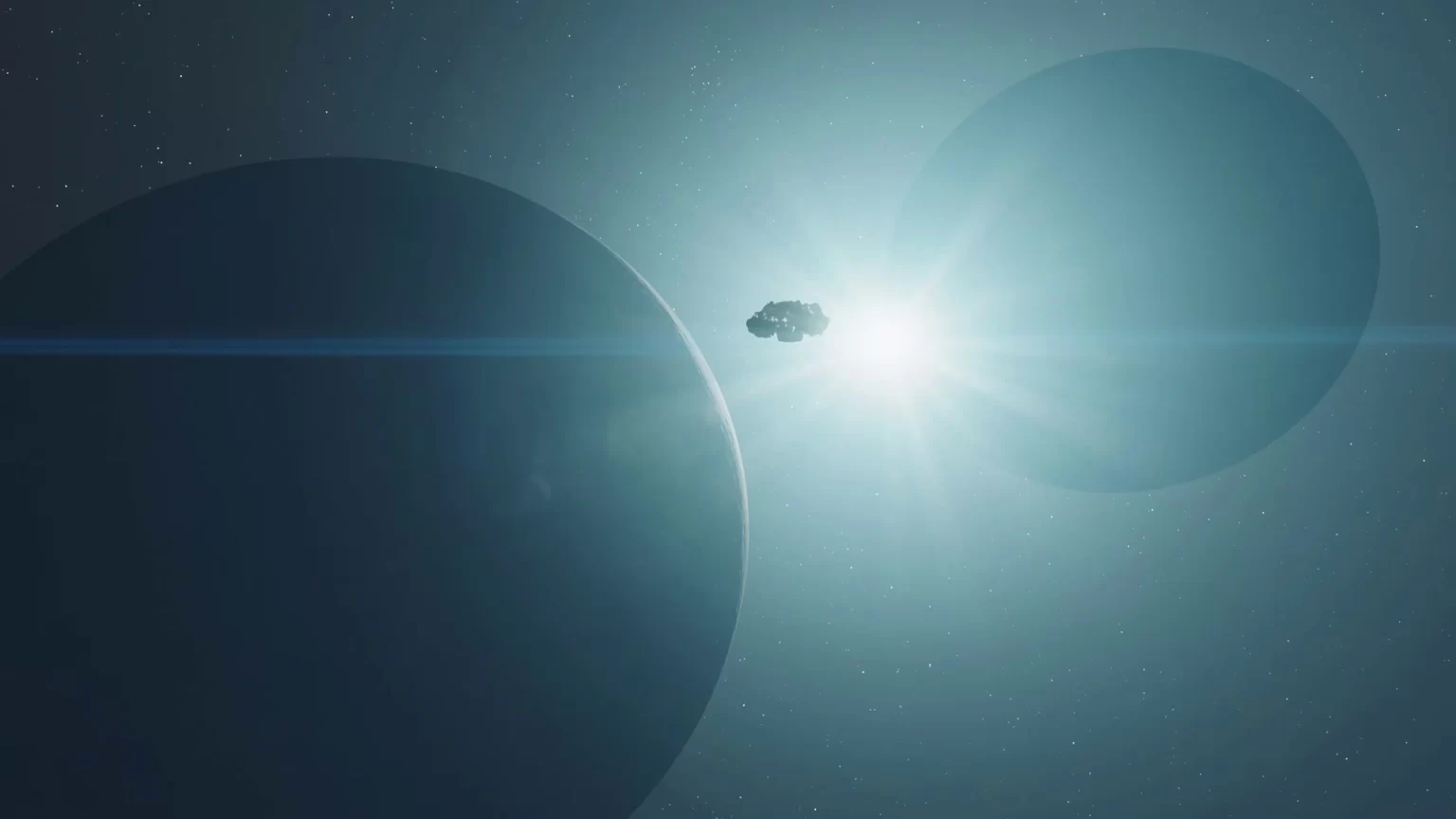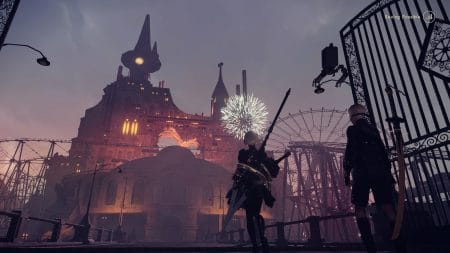Every great video game has a great beginning. Some, like Uncharted 2: Among Thieves, start with immediate thrills and heart-racing action. Others, like Breath of the Wild, start with serene views and tantalizing freedom. No two openings are the same, but nearly all have one thing in common—and that’s the start screen.
Most start screens go unnoticed. In fairness, that’s by design. Create a frilly screen with a million distractions, and you risk detracting from the ultimate goal: to hit “Start Game.” Yet, a recent Twitter take from an ex-World of Warcraft designer has called attention to the art of title design, albeit in a rather zesty way:
Look, as ridiculous as this tweet is (and make no mistake, it’s ridiculous), there’s one nugget of truth buried within. Start screens may prioritize function over form, but that’s not to say developers can’t have fun with them. There have been countless examples of stellar start screens over the years—as we’re about to explore.
– David Silbert, Editor
Our Top Video Game Title Screens
In honor of the Starfield “start-gate” controversy, here are eight of the very best video game start screens:

Brütal Legend
“What I hold in my hand is not just going to blow your mind; it’s going to blow your soul,” Jack Black tells the player as he lays the vinyl cover containing Brütal Legend’s start screen onto a wooden tabletop.
Double Fine’s rock opera Brütal Legend is heavily inspired by heavy metal—not just in its soundtrack, but also in its style. We see this with the game’s start screen, which imitates a simple rock EP with the album name stylized against an all-black background. A yellow sales sticker sits atop the right-hand corner. The ambient sounds of the Record Surplus L.A. store linger in the background. The red sticker on the cover invites us to “Press Start.” If you resist long enough, Black’s hands impatiently gesture on the screen—occasionally drumming on the wood or pointing at the red sticker. The game wears its love for heavy metal on its sleeve.
The title screen captures the culture of trading and sharing physical music records: objects that were meant to be not only listened to, but also shared. The scene transports me back to the early 2000s, when my high school friends and I still exchanged physical media (mostly CDs) to introduce each other to our favorite bands, songs, and genres. Exchanges often meant waiting in anticipation for friends to listen to a song and hoping it made them feel something too.
My friends and I often shared these moments while playing our favorite video games. Brütal Legend brought these two loves together while embracing the physical media that inspired it.
– Written by Clint Morrison, Jr.
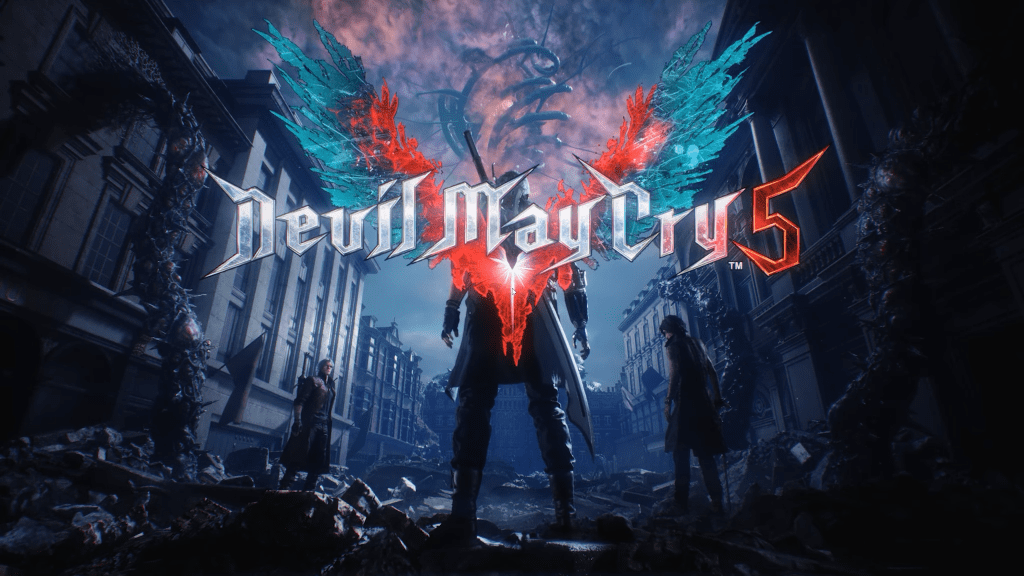
Devil May Cry 5
Devil May Cry 5‘s start screen is an exhilarating masterwork that never fails to get my blood pumping. It’s not just a mere introduction; it’s a perfect prelude that gets the adrenaline going and prepares you for the lightning-fast action to come.
The transition into the Devil May Cry title card is nothing short of spectacular. The game opens on Nero’s new Devil Breaker, showcasing the intricate details of his new arm. As the camera pans up to his head, we hear a beautiful descending musical line. The camera rests on Nero’s portrait, and the beginnings of his battle theme, “Devil Trigger,” plays as a synth drone builds up anticipation.
Then, an explosion of color. A pair of wings form behind Nero in the shape of a V. Beyond the obvious symbolism (V is the Roman numeral for 5), the angelic depiction of our protagonist hints at his character’s narrative arc. The sequence ends with the iconic tagline, “Devil May Cry.”
One other fun aspect of this start screen: As you progress through the game and encounter V and Dante, they too will appear in the title. A nice touch for an already amazing sequence.
– Written by Eric Tate
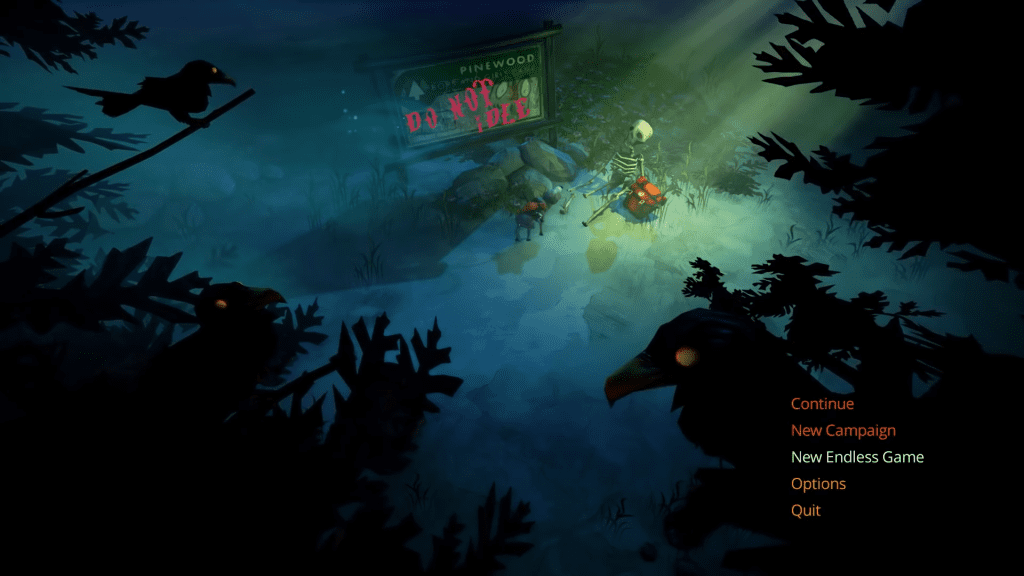
The Flame in the Flood
A desolate, dark nook of the woods. Crows caw from the shadows. Wolves watch, ready to pounce. The wind whistles. A skeleton leans against a log, and a dog gently paws at it. As you click “Start,” a guitar twangs a few bluegrass notes. The dog accepts his owner is dead, pulls away a red knapsack from the body, and heads off-screen.
The camera cuts to Scout, a lonely young woman in an apocalyptic American South, sitting by a fire. The dog approaches. Scout’s nervous, but then he wags his tail and pushes the red pack to her. She reads his collar: Aesop. In the bag, Scout discovers a working radio — her first touch with civilization in ages. The game begins.
I love how immediately developer The Molasses Flood conveys the grim stakes for this survivor’s journey. There is a tension between fear and hope as Scout and Aesop set off on a homemade raft on the river, and you already know that the only way out is through.
– Written by Amanda Tien
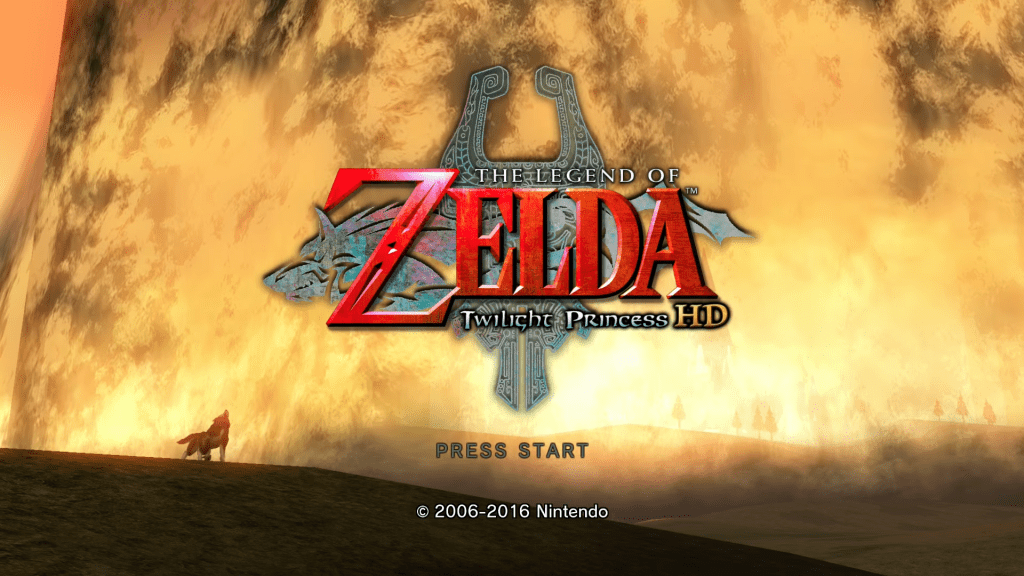
The Legend of Zelda: Twilight Princess
I have misunderstood the assignment. This is not an artistic choice.
You might be thinking, “Twilight Princess does have a cool start screen. That little montage of Link and Epona galloping through Hyrule field, then of wolf Link howling at the moon, right?” Yeah, that is cool, but that’s not actually what I appreciate about the title screen.
What’s cool about it is that if you reset your GameCube or Wii (but not Wii U, sadly) at the right time, you can actually end up as that Link in the title sequence, riding across the Bridge of Eldin. This is known as the Back in Time glitch. Dying or warping (in specific ways—falling into a void works, but getting crushed to death does not) prompts the game to respawn Link. Resetting the console prompts the game to load him into the start screen. Do both on the right frame, and you’ll end up respawning Link (and the player) into the title sequence.
You’re limited in what you can do (you have no items, and there are no enemies), but it’s still an interesting game state. You can run around and even save the game. I spent hours running around and messing with this glitch when I was younger, and I remember it fondly.
Honorable Mention: Sucker Punch’s Infamous has a start screen to cut-scene transition that kicks off the story with a bang. It’s one of the most memorable title transitions I can remember.
– Written by Kei Isobe
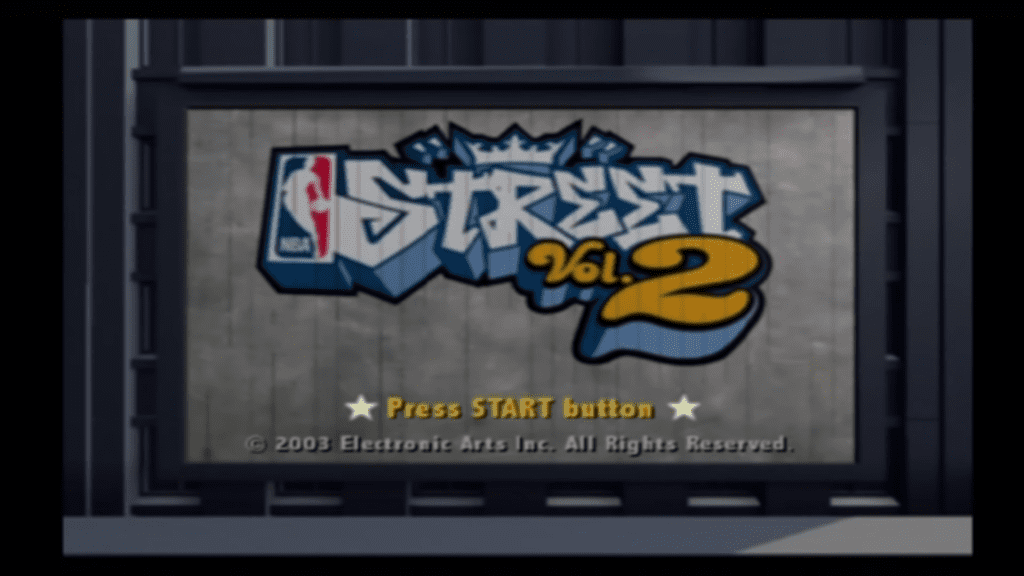
NBA Street Vol. 2
NBA Street Vol. 2 was one of the most formative games of my childhood. Yet it wasn’t the stylish, over-the-top basketball gameplay or the New York graffiti-inspired aesthetic that truly stood out. What stuck with me most was the game’s fantastic old-school, boom-bap hip-hop soundtrack. And what better song to kick such a soulful game than with the legendary duo Pete Rock and CL Smooth’s “They Reminisce Over You (T.R.O.Y.).”
That unmistakable saxophone sample, unsurprisingly, always makes me reminisce about simpler times: a time of AND 1 Streetball compilation videos and unreasonably baggy clothes. The only form of basketball I learned to play was from NBA Street. It’s just a shame I couldn’t translate those skills to the court in real life.
– Written by Donovan Harrell

What Lies in the Multiverse
My favorite start screens all have one thing in common: They’re dynamic. Of all the multi-layered title screens I’ve seen, What Lies in the Multiverse is the absolute pinnacle.
The screen opens with the main character sitting by a tree atop a waterfall. Birds chip in the background as water rushes over the edge. It’s a relaxing sight, punctuated by a white backdrop that makes every color pop. Yet that tranquility is deceptive. It’s meant to completely and utterly lull you into that state of relaxation before the game’s story tears your heart out. Masterful work.
– Written by Anthony Franklin II

The Witcher 3: Wild Hunt
The Witcher 3 depicts a deeply troubled, war-torn, and amoral world that Geralt must navigate, with deadly monsters and even more dangerous politicians lurking around every corner. Every land the player traverses contains traces of beauty, love, and even hope, but the darkest of forces surround each of these traces, making simply existing in such an environment an act of courage.
CD Projekt Red opted to take a clever route in embodying such tension with its start screen by showing Geralt meditating outside (or within) various locales. Every time a player boots up The Witcher 3, they see a man taking the time to rest and breathe just a few yards away from a spooky swamp, abandoned village, or burned-down forest.
Such is the brilliance of the game’s title screen. Before even playing one minute, the player already witnesses the protagonist finding time to care for himself even amid such bleakness. Without pressing a button, the player can understand what kind of experience to expect from a single image.
– Written by Sam Martinelli

Xenoblade Chronicles
Nowadays, we know Xenoblade Chronicles as a lineage of massive, flagship Nintendo JRPGs. But it wasn’t always this way. Before Monolith’s games became bi-yearly installments, we had to fight just to see the original game come to the States. Without grassroots movements like Operation Rainfall, we might have never received Xenoblade Chronicles, let alone an entire franchise. Shulk walked so Pyra and Mythra could run.
There’s a reason so many fans (myself included) vouched for Xenoblade Chronicles back when Nintendo didn’t. There’s the obvious: It’s a mammoth-sized game with great combat, captivating characters, and incredible music. But there’s also the smaller, subtler things: The near-instant loading. The absurdly impressive draw distances. And, as you’ve probably already surmised, one hell of a great start screen.
The magic of this title sequence lies in its simplicity. When players boot up the original game, all that greets them is a lone sword, the Monado, in a field of grass. As the words “Press Any Button” flash on the screen, the game’s theme plays. A piano plays a melancholic ballad, soon joined by strings and woodwinds. A few minutes in, the song picks up, culminating in a massive crescendo, then fading back to its softer roots. All the while, the screen’s visuals change to reflect the changing time of day.
Monolith knew what it was doing with this start screen. Everything, from its minimalist UI to its dynamic visuals, suggests that a lot of care and love went into this sequence—and it shows. There are plenty of great title screens out there, but Xenoblade Chronicles’ remains the only one I remember just as fondly as (or arguably more fondly than) the game itself.
– Written by David Silbert
What Are Your Favorite Video Game Start Screens?
Let us know in the comments below!


